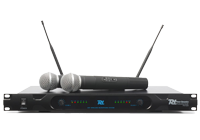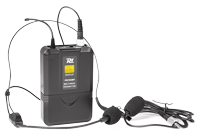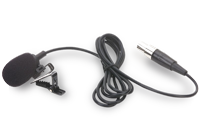Wireless Microphones
Wireless microphones are a brilliant choice for performers, singer-songwriters or speech givers as they allow you complete freedom of movement during your performance or presentation.
Read More-
PD PDH1 Wireless Headset Microphone£31.99
- Electret headset microphone for speech and vocals suitable for bodypacks 179.
- 135
Out Of StockOut Of Stock -
Skytec STB4 Bodypack Microphone Transmitter, UHF - 100Mhz£34.00
- This compact Bodypack transmitter is compatible with lapel and headworn microphones delivering a high RF performance and a crisp and clear sound due to the used technology.
- Applicable for UHF wireless systems 179.
- 165, 179.
- 170 and 179.
Out Of StockOut Of Stock -
PD PDT1 Lavalier Microphone£22.00
- A sensitive lavalier tie-clip microphone with a wide frequency response for bodypacks 179.
- 135
Out Of StockOut Of Stock -








